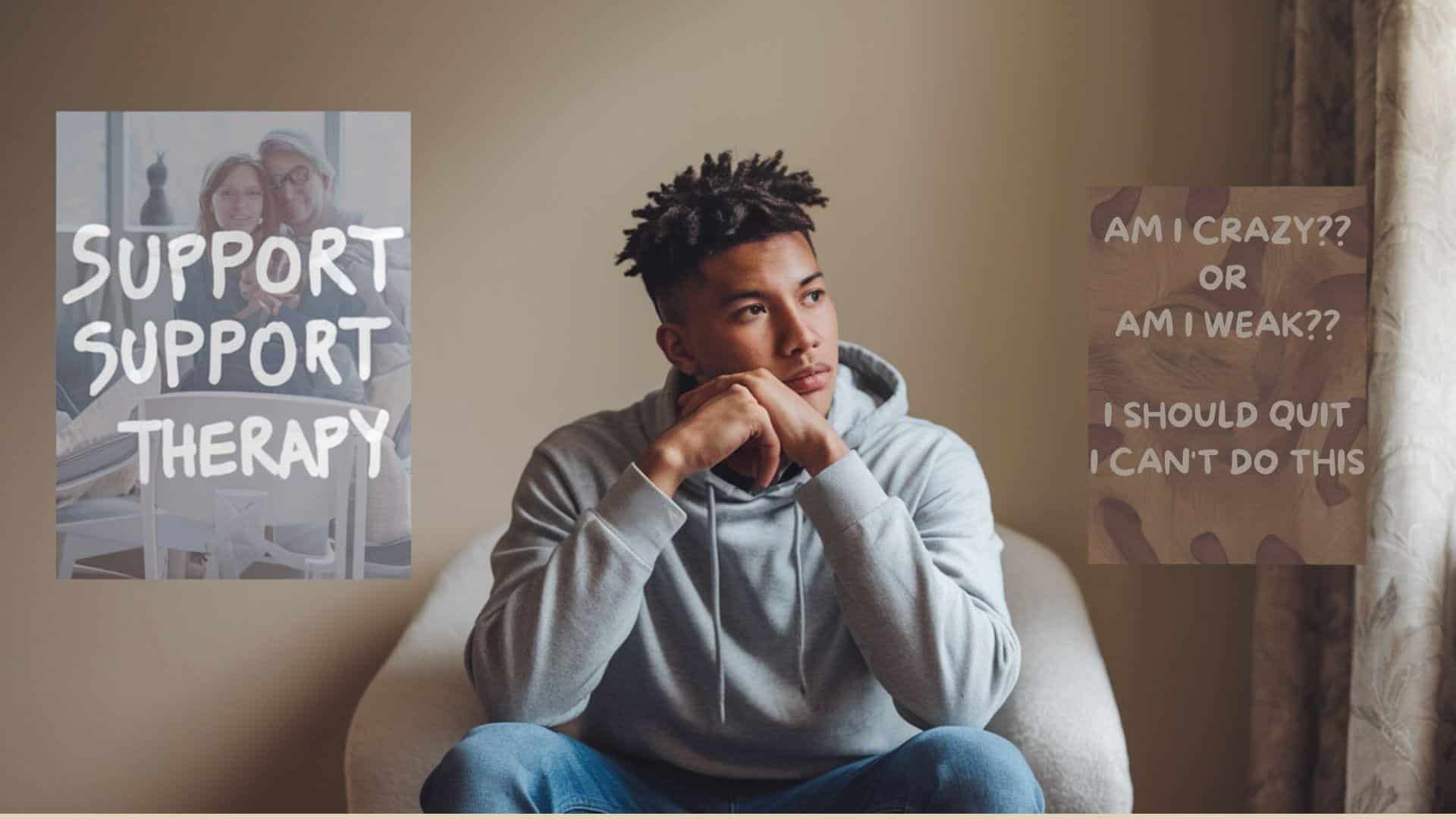Do you feel lost in your 20s, unsure which way to turn next? Many young adults struggle with this feeling. You’re not alone.
Finding the right mental health support can make a real difference at this key life stage. But most people don’t know how to find suitable help that meets their specific needs.
Therapy designed for young adults offers tools to handle stress, build self-worth, and create clear life goals. With proper support, you can move forward with confidence.
This guide walks you through practical steps to find a therapist who understands your unique challenges. Keep reading to learn how to start your h adult life brings many mental health challenges. This shift can test even the strongest minds. Young adults face big choices with lasting effects.
Mental health care matters deeply during this time. The brain continues to grow until about age 25. This growth affects how young adults handle stress and make choices.
1. Common Concerns Young Adults Face
Young adults often deal with several issues that therapy can help with:
- Anxiety can make daily tasks feel overwhelming
- Depression may drain energy and hope
- Loneliness can happen even when surrounded by others
- Uncertainty about the future creates worry
These problems can affect school work, jobs, and relationships. Without help, they might grow worse over time.
2. Building Skills That Last
Therapy gives young adults tools they need for life. These include:
- Ways to calm racing thoughts
- Methods to improve mood naturally
- Skills for making and keeping friends
- Techniques for making tough choices
These abilities help not just now but for decades to come. Learning them early saves much pain later.
Good therapy helps young adults build their own solutions. This creates strength that lasts through many life changes. The skills gained serve as a foundation for future growth.
Types of Therapy for Young Adults

Young adults can benefit from various therapy approaches. Each type works differently and helps with specific needs.
1. Cognitive Behavioral Therapy (CBT)
CBT focuses on the connection between thoughts and actions. It helps young adults spot negative thinking patterns that cause problems.
In CBT sessions, you learn to:
- Notice unhelpful thoughts
- Question if these thoughts are true
- Replace them with more useful ones
This method works well for anxiety and depression. Many young adults see results in 12-16 weeks of regular sessions.
CBT is backed by strong research showing its success. Studies show it helps with test anxiety, social fears, and work stress. Therapists often give homework between sessions to practice new skills.
2. Dialectical Behavior Therapy (DBT)
DBT helps with strong emotions that feel hard to control. It teaches young adults to accept feelings while still making helpful choices.
Key DBT skills include:
- Staying calm during stress
- Handling conflicts better
- Paying attention to the present moment
This therapy works well for mood swings and relationship troubles. It often includes both group and one-on-one sessions.
DBT was first made for harder mental health issues. Now it helps many young adults with everyday stress too. The skills work well for college students facing social and school pressures.
3. Talk Therapy
Talk therapy (also called psychotherapy) creates a space for open discussion. A trained therapist listens and guides the conversation.
Benefits of talk therapy include:
- Gaining new insights about yourself
- Working through past experiences
- Learning to express feelings clearly
This approach builds self-knowledge and communication skills. Sessions usually happen weekly for several months.
Talk therapy comes in many forms. Some focus on your past, others on current issues. The right fit depends on your personal needs and goals.
4. Group Therapy
Group therapy brings together young adults with similar concerns. A therapist leads discussions among 5-10 people.
The value of group therapy comes from:
- Hearing how others handle similar problems
- Practicing social skills in a safe setting
- Feeling less alone in your struggles
Groups often meet weekly for 60-90 minutes. Many young adults find strength in this shared experience.
Group therapy costs less than one-on-one sessions. This makes it more open to young adults on tight budgets. Some groups focus on specific topics like grief, stress, or social skills.
What to Expect in Therapy Sessions?
First-time therapy can seem scary. Knowing what happens helps ease worries. Most young adults find the process simpler than expected.
- The Role of the Therapist: Therapists create a safe space for open talk. They guide without judging. Their job is to help you find your own answers, not give direct advice. They keep your talks private and show respect for your views.
- Common Techniques Used: Methods vary based on your needs. Many therapists use journal writing, role-playing, and breathing exercises. Setting small goals helps track progress. Past events may be discussed to find patterns in current behavior.
- Typical Session Structure: Most sessions last 45-55 minutes with a simple format. They begin with a brief check-in, move to main topics, and end with next steps. Weekly sessions are common at first, often becoming less frequent as you progress.
- Confidentiality and Trust: Your talks stay private with few exceptions. Therapists must report only when safety is at risk. Your therapist will explain these limits clearly. This privacy helps build the trust needed for effective therapy.
Overcoming Common Barriers to Therapy
Many young adults want therapy but face roadblocks. These barriers stop them from getting help. Understanding these challenges helps in finding ways around them.
1. Cost Concerns
Money worries top the list of therapy barriers. Many young adults have limited funds and no insurance. Therapy can cost $80-$200 per session without coverage. This makes regular visits seem out of reach.
Several options exist for more affordable care. Community health centers offer lower fees based on income. Many therapists use sliding scale payments for those who need it.
Online therapy platforms often cost less than in-person visits. Some schools provide free counseling to students. With research, most people can find options within their budget.
2. Time Constraints

Busy schedules make therapy seem impossible. Between work, school, and social life, finding an hour each week feels hard. This becomes worse when adding travel time to sessions.
Flexible options now exist for busy young adults. Many therapists offer evening and weekend slots. Online sessions cut travel time completely.
Some therapists even provide 30-minute sessions for those with tight schedules. Making mental health a priority often means shifting other activities, but the benefits make this worthwhile.
3. Stigma and Misconceptions

False ideas about therapy still exist. Some young adults worry others will think they are “crazy” or “weak” for seeking help. Family or cultural backgrounds sometimes view therapy as shameful or unnecessary.
Education helps fight these outdated views. Therapy is like hiring a coach for your mind. Famous athletes and business people use coaches without shame.
The same applies to mental health. Sharing stories about therapy helps normalize it. Finding supportive friends can counter negative family views. Remember that getting help shows strength, not weakness.
4. Fear of Vulnerability
Opening up to a stranger feels scary. Many young adults worry about being judged. They fear crying or showing emotion in front of someone new. Some worry the therapist won’t understand their specific issues.
Good therapists expect and welcome these fears. They train for years to create safe spaces. The first few sessions may feel awkward, but comfort grows with time.
Therapists help set the pace of sharing. You control what and when you share. Many find that once they start talking, relief quickly follows.
How to Find the Right Therapist?
Finding the right therapist takes time and effort. The match between you and your therapist greatly affects how well therapy works.
- Ask for Referrals: Start by asking people you trust. Friends, family doctors, or school counselors often know good therapists. They can suggest names based on your specific needs. Personal recommendations help narrow down the many choices.
- Check Credentials: Look for proper training and licenses. Most good therapists have master’s or doctoral degrees. They should be licensed in your state. Different types of mental health pros include psychologists, counselors, and social workers. All can provide good therapy with the right training.
- Consider Therapy Style: Think about what approach might work for you. Some therapists focus on changing thoughts. Others look more at feelings or past events. Reading about different therapy types helps you know what fits you. Many therapists use a mix of methods to meet your needs.
- Look for Specialty Experience: Find someone who knows about young adult issues. Some therapists focus on this age group. They understand college stress, career starts, and changing relationships. Ask potential therapists about their work with people your age.
- Try a Consultation: Most therapists offer a first meeting to see if you click. Use this time to ask questions and gauge your comfort level. Notice how you feel talking to them. A good fit feels comfortable even when discussing hard topics.
- Trust Your Gut: Your feelings matter in this choice. If something feels off, it probably is. The right therapist should make you feel heard and respected. You should sense they truly want to help. This gut feeling often tells you what your mind hasn’t yet processed.
Tips for Making the Most of Therapy
- Be honest with your therapist about your thoughts and feelings.
- Set clear goals for what you want to achieve through therapy.
- Attend sessions regularly and arrive on time.
- Do the homework or practice exercises between sessions.
- Take notes during or after sessions to remember key insights.
- Speak up if something isn’t working or you need a different approach.
- Apply what you learn in therapy to real-life situations.
- Be patient with the process—change takes time and effort.
The Road to Growth and Healing
Growth and healing through therapy happen step by step. The path isn’t always straight or easy. Many young adults see small wins before big changes appear.
Progress often comes with ups and downs. Some weeks feel full of forward movement. Others might seem stuck or even backwards. This pattern is normal in therapy. Each step, even backward ones, teaches something useful.
Most young adults notice first changes in how they think. They spot negative thoughts more quickly. Later, feelings start to shift. Actions change last, as new habits take time to form.
The skills learned in therapy last for life. They help with current problems and future ones too. With time and practice, these tools become second nature. They turn into a built-in way to handle life’s tough spots.
The goal isn’t to create a perfect life. Rather, therapy builds the strength to face what comes. This inner power stays with you long after therapy ends.
Conclusion
Therapy offers young adults a practical path forward. We’ve seen how various methods work and what to expect during sessions.
Finding the right therapist takes time, but the effort pays off. The match between you and your therapist makes all the difference in your progress.
Remember that growth happens in small steps. Some days feel easier than others. This is all part of the healing process. The tools you gain from therapy help not just today but throughout your life. They become skills you can use whenever needed.
Your mental health matters. Taking this step shows courage, not weakness. Many young adults before you have walked this path and found their way. You can too.
























